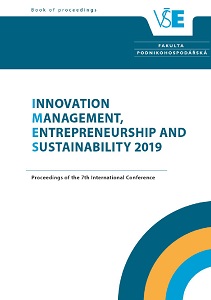Fuzziness Versus Randomness in Managerial
Project Evaluation
Fuzziness Versus Randomness in Managerial
Project Evaluation
Author(s): Simona Hašková
Subject(s): Social Sciences, Economy
Published by: Vysoká škola ekonomická v Praze
Keywords: Project evaluation; fuzzy approach; probabilistic approach; expected present value; fuzzy number
Summary/Abstract: Purpose: Identification of analogy and differences between the probability and fuzzy approachis performed in order to determine which procedure is more beneficial for decision-makers inthe field of strategic management and to assess whether the expected present value criterion isa strong guide to the manager's decision.
Design/methodology/approach: The methodology provides tools for dealing with uncertaintyin managerial problems in the sense of randomness by means of the probability approach andvagueness through the fuzzy approach.
Findings: Information advantages of the fuzzy approach are stated in comparison to theprobabilistic solution. They are exhibited in the application part within the project economicvaluation of the construction and sale of apartment units. The theoretical superstructure rests inthe description of the differences and analogy between the probabilistic and the fuzzy approachto the economic assessment.
Research/practical implications: Expected present value is a weighted average whosecalculation deletes the values of the project scenarios; this result carries less information thaninformation from individual scenarios. The fuzzy approach produces limits of possible valueswhose centre value is a subjectively expected value not burdened by managers ́ excessiveoptimism or pessimism in terms of probability occurrence of cash flows in individual scenarios.Knowledge of these limits is useful for investors with different attitudes towards risk and assuch can be beneficial in terms of managerial decision-making.
Originality/value: Identification of the interval limits of possible expected value enables toidentify maximum investment expenditure for a lossless project.
- Page Range: 255-264
- Page Count: 10
- Publication Year: 2019
- Language: English
- Content File-PDF

